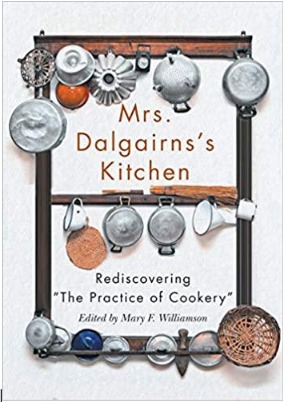Catherine Emily Calbeck was born in 1788 in Charlottetown PEI into an upscale household that played a prominent role in early Canadiana. She went on to marry Peter Dalgairns who whisked Catherine away to his beloved Scotland and Catherine was forever thought to be a Scot herself. It was here that she wrote her infamous The Practice of Cookery which rose in popularity despite being written by a woman.
If you want to get a glimpse into the life and everyday workings of an 1800’s household, this book will provide an extensive look into that world. Not only does Dalgairns provide rudimentary recipes, but takes us into the family’s garden, showing us how to manage the poultry yard, which cows to choose for optimum beef and milk production, explaining the brewing process and required equipment for homemade beer, and where to situate your bee aviary on the property.
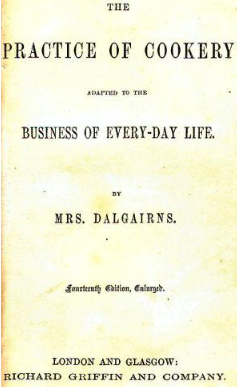
My favourite portions are the ingredients and process for making homemade medicine and their application. Have an earache? “Dip a little cotton wood into a mixture of oil of sweet almonds and laudanum and put it into the ear; or apply a small poultice, in which is a raw chopped clove of garlic.” (pg 365) No thanks!
Mary Williamson studied the original text and compiled Catherine’s work with some context. We are introduced to the Callbeck family and the lay of the land in PEI both politically and personally. Translating the old English/Scottish references and turns-of-phrase must have been a challenge but the end result is a text that makes sense to our modern language.
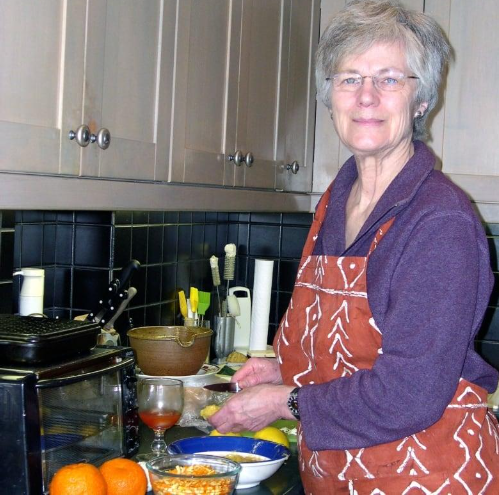
A little background on Mary: “Mary F. Williamson is a retired fine-arts bibliographer and adjunct faculty in graduate art history at York University. She co-authored Art and Architecture in Canada (1991), and her recent writings on nineteenth- and early-twentieth-century cookery have appeared in Covering Niagara: Studies in Local Popular Culture (WLU Press, 2010) and The Edible City (2009). She has taught art librarianship at various graduate library schools in North America, and has published numerous articles on Canadian wood engraving, book and periodical illustration, art librarianship and culinary history. Italian baroque drawings have been a special interest for many years and examples from her collection have been lent to exhibitions in Canada and abroad.” Mary’s expertise is evident in her extensive research about Mrs. Dalgairns and her cookbook.
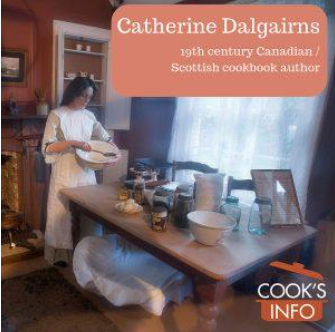
The first part of the cookbook portion provides explanations for all food eaten in Britain in the 1800’s, divided into the traditional categories: soups, proteins, vegetables, desserts, etc. After a detailed appendix of measurement explanations, household expense budgets and a breakdown of the seasonality of foods, Williamson brings in food writer Elizabeth Baird to translate many of Mrs. Dalgairns’ recipes into today’s venacular. I thought it would be fun to try a different protein and this book provided it: Rabbits Stewed with a Brown Sauce. Give your holiday table a different main attraction this year – go to our Recipe section to see if you’re game! As with all the dishes in the book, the original recipe is followed by Elizabeth’s modern version. Something as simple as the word “tablespoon” started off as a “table-spoonful”. And they had catsup (ketchup) back in that era – a product that has stood the test of time! Two things I learned just reading about how to cook rabbit.
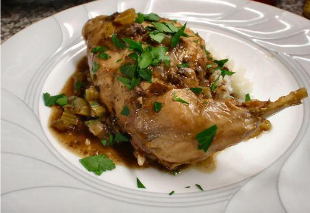
If you love history and cooking, this book brings both these worlds into one book. To win a copy, go to our Giveaway section. To purchase the book for yourself or a culinary historian on your Christmas list, check out https://www.mqup.ca/mrs-dalgairns-s-kitchen-products-9780228005339.php
Content and images used with permission by McGill-Queens University Press. https://www.mqup.ca/mrs-dalgairns-s-kitchen-products-9780228005339.php


